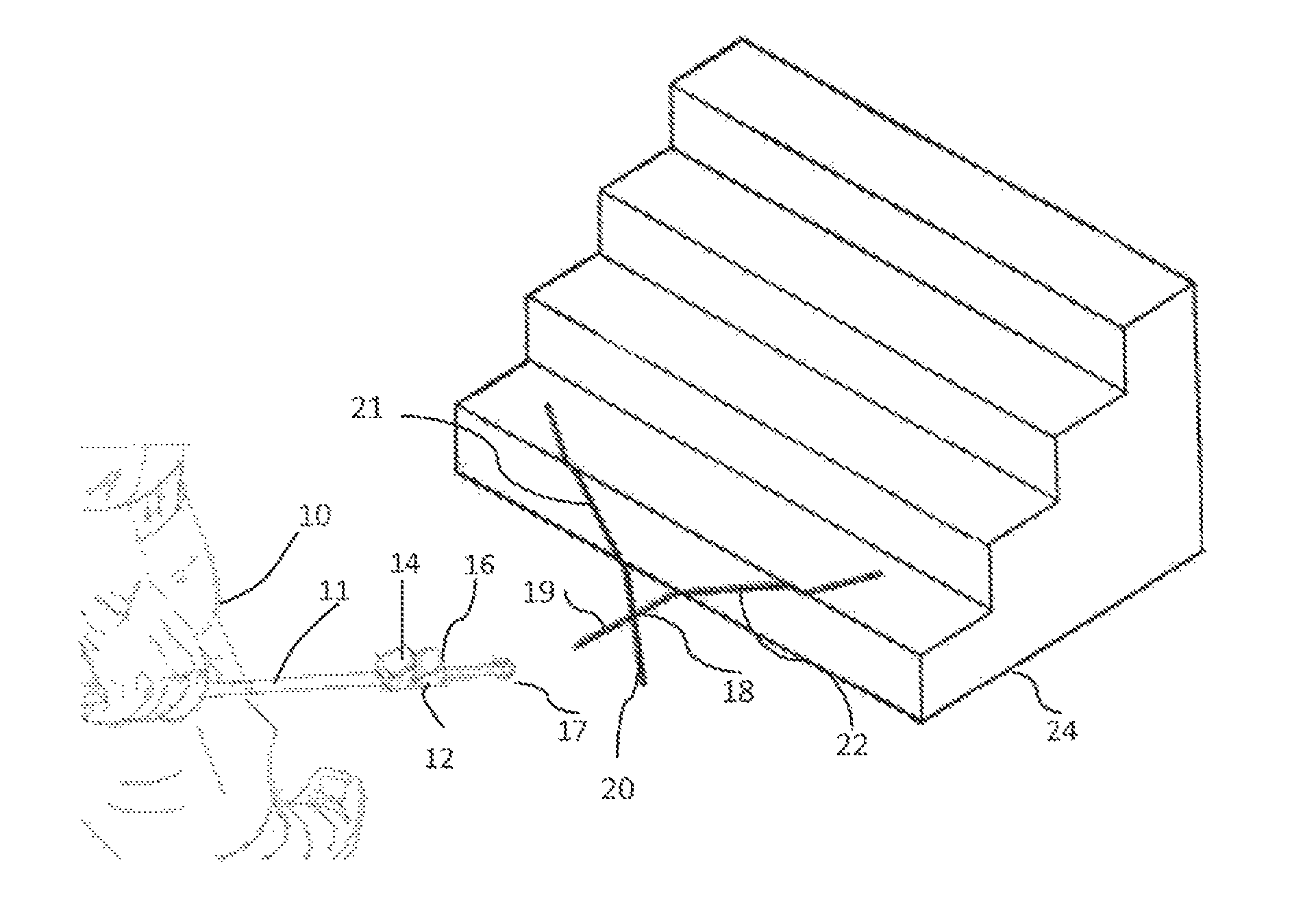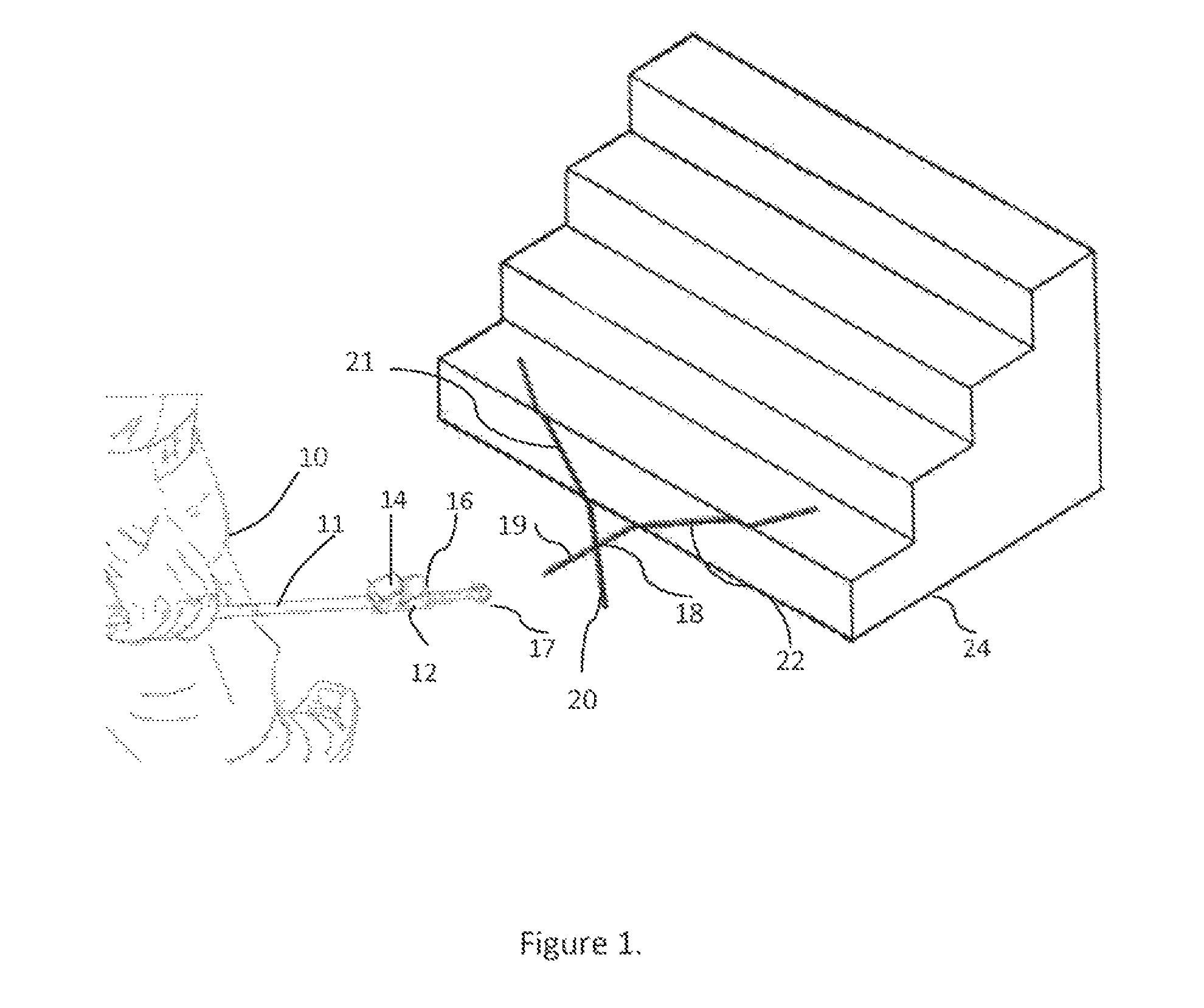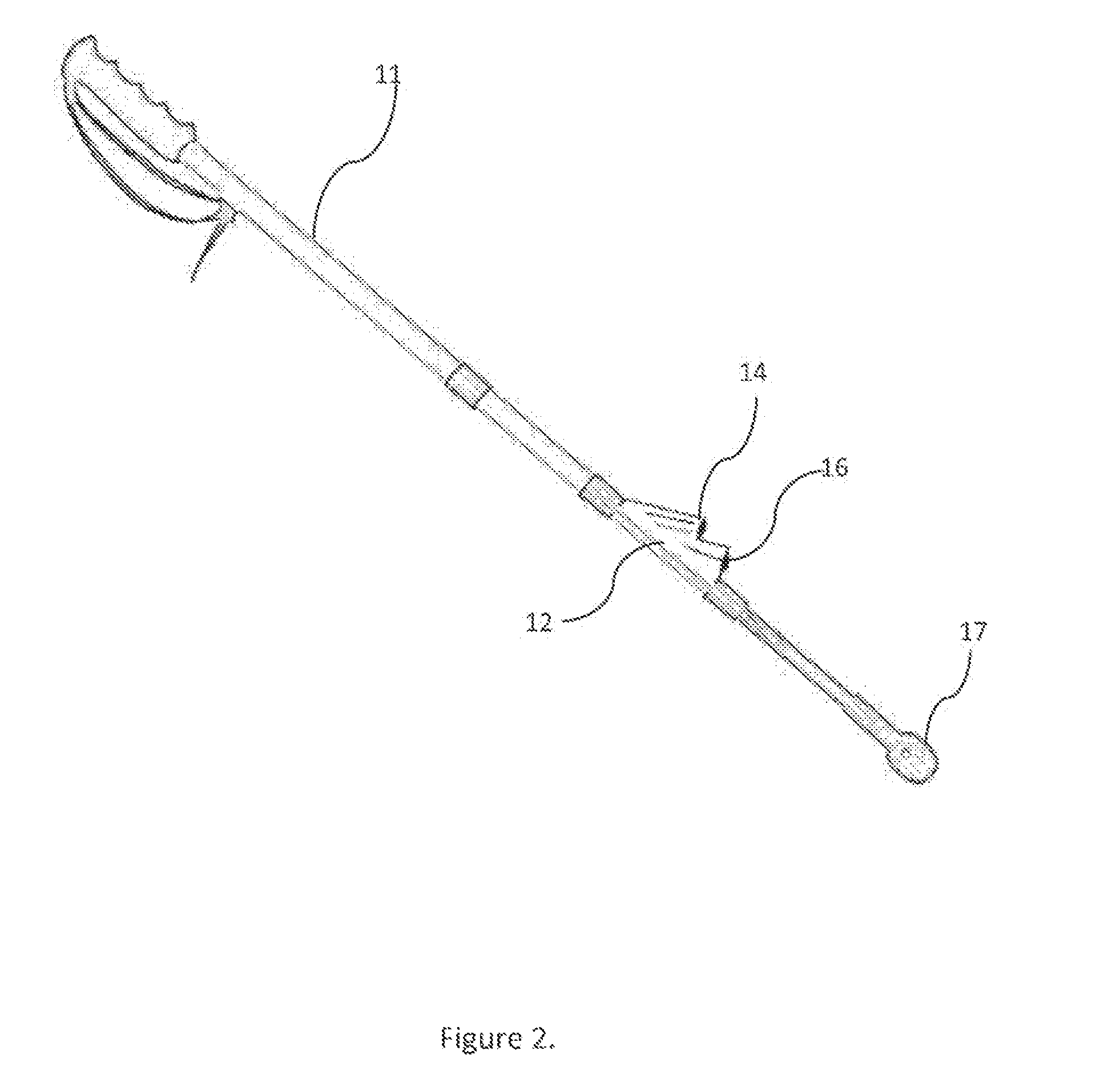Laser obstacle detector
a laser and obstacle technology, applied in the field of laser obstacle detectors, can solve the problems of inability to benefit from real breakthroughs in practical and affordable mobility devices, limitations in their use, and people in considerable danger, and achieve the effect of reducing computing time and powerful computers
- Summary
- Abstract
- Description
- Claims
- Application Information
AI Technical Summary
Benefits of technology
Problems solved by technology
Method used
Image
Examples
Embodiment Construction
[0023]Although obstacle detection can be used in a variety of embodiments including human hand-held games, vehicles, wheelchairs, robots, and a number of moving objects, one preferred embodiment is shown in FIG. 1 as a walking cane for the blind and visually impaired.
[0024]Referring to FIG. 1, a blind or visually impaired person 10 carries a cane 11 as he walks. The cane typically is constructed from light weight metal, fiberglass or plastic with is tip 17 at the bottom end to help the person “feel” his way along. Attached to the top side of the cane 11, detector system 12 consists of en infrared laser projector 14 and solid state camera assembly 16. Other elements of detector system 12 are referenced in the discussion relevant to FIG. 3. The infrared light spectrum is used for eye safety, unobtrusiveness and for easier detection by a solid state camera imager. An infrared laser beam pattern 18 is projected from the projector 14 in front of the person 10. The laser pattern is aligne...
PUM
 Login to View More
Login to View More Abstract
Description
Claims
Application Information
 Login to View More
Login to View More - R&D
- Intellectual Property
- Life Sciences
- Materials
- Tech Scout
- Unparalleled Data Quality
- Higher Quality Content
- 60% Fewer Hallucinations
Browse by: Latest US Patents, China's latest patents, Technical Efficacy Thesaurus, Application Domain, Technology Topic, Popular Technical Reports.
© 2025 PatSnap. All rights reserved.Legal|Privacy policy|Modern Slavery Act Transparency Statement|Sitemap|About US| Contact US: help@patsnap.com



